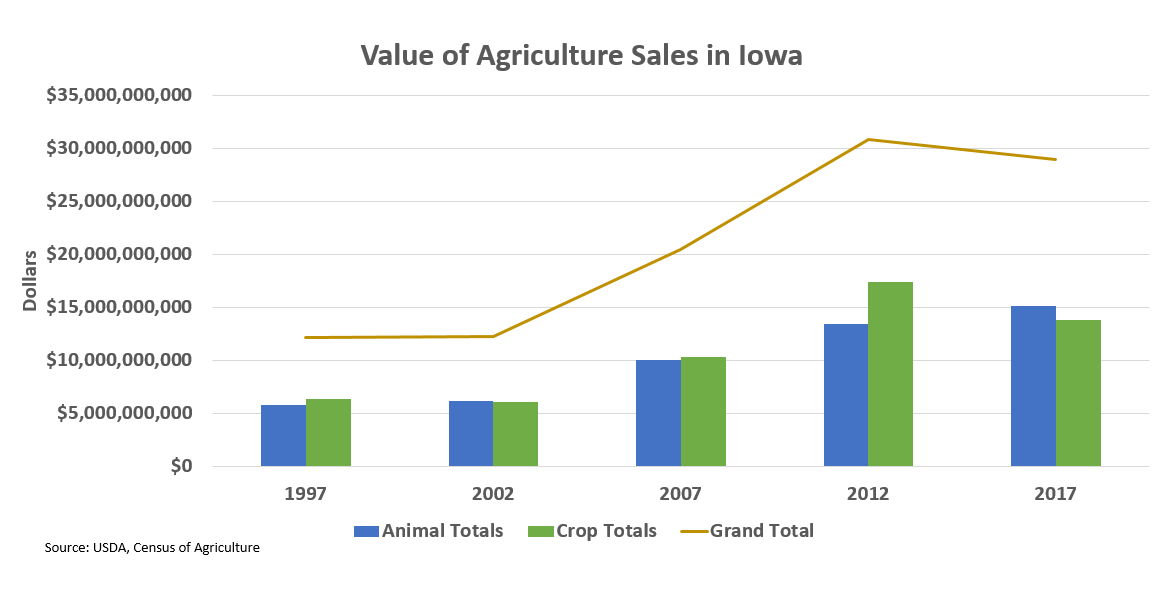Agriculture in Iowa is constantly changing. Every 5 years we get a snapshot of those changes with the Census of Agriculture by USDA. Earlier this year, USDA released the data from the 2017 Census of Agriculture. Here are 5 insights on Iowa Agriculture from that data.
- The number of farms in Iowa continues to decline and bifurcate. Iowa now has 86,104 farms according to the 2017 Ag Census. This is down from 88,637 farms in 2012 and down 10,601 farms since the 1997 Ag Census.
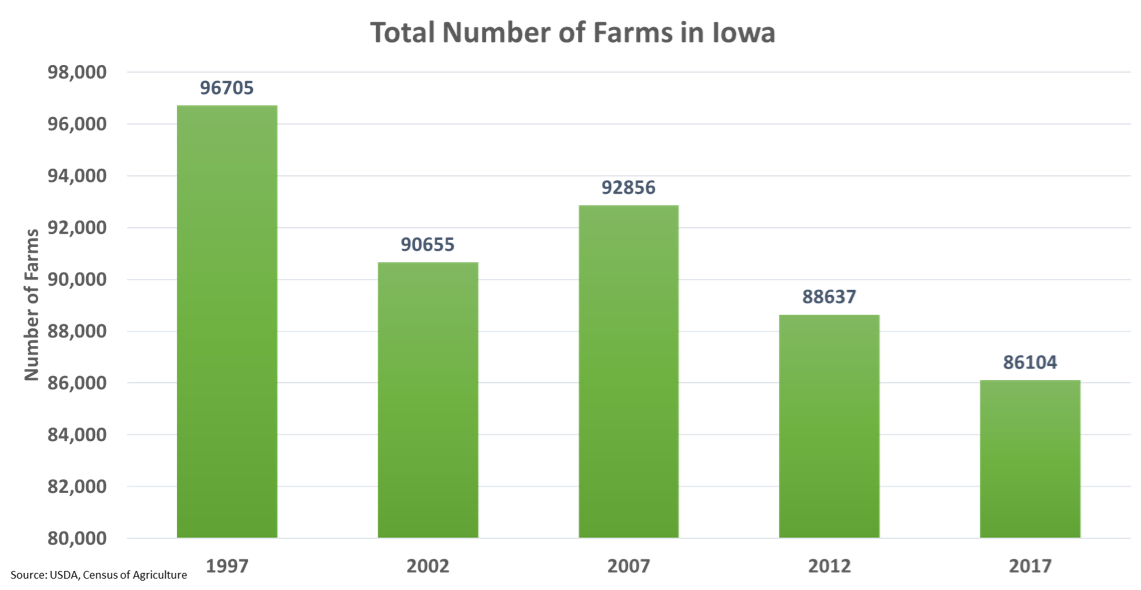
- The distribution of farms by size continue to bifurcate with growth in the number of farms with less than 10 acres and growth in the number of farms with more than 2,000 acres. In general, the number of farms between 10 acres in size and 999 acres in size continues to decline. In 1997, there were more farms in the 180 to 499 acre size but that category has lost more than 10,000 farms since 1997. The category with the largest number of farms is now the 50 to 179 acre category with slightly more than 20,000 farms in Iowa.
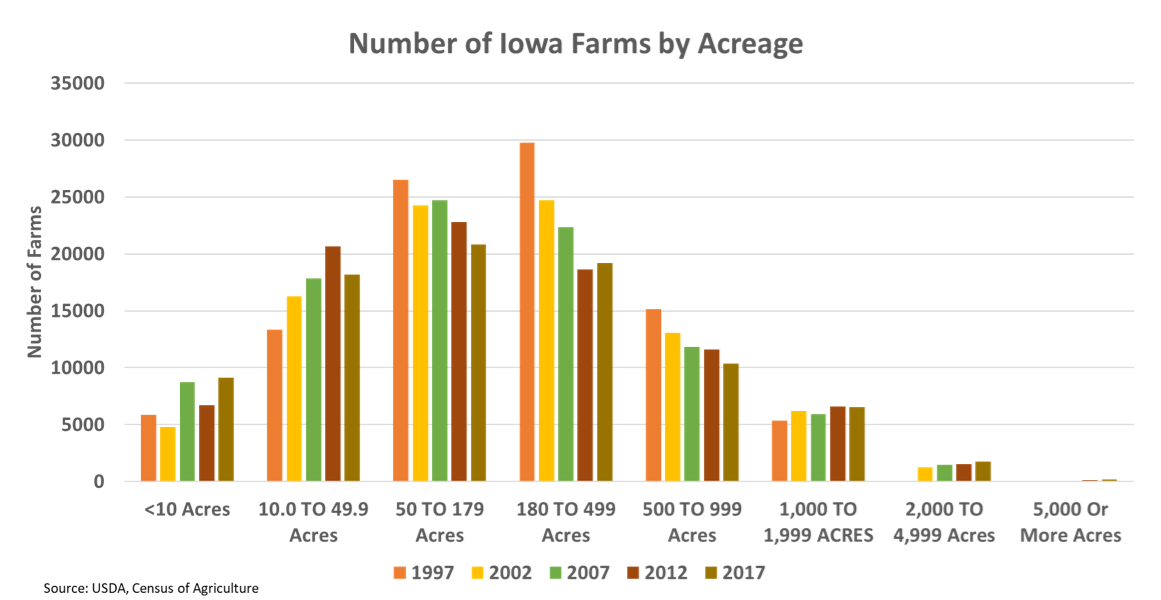
- The top 13 enterprises on Iowa farms are Corn, soybeans, cattle, hay, cattle feedlots, commercial hogs, layers, sheep & goats, finishing hogs, milk production, vegetable production, broilers and turkeys.
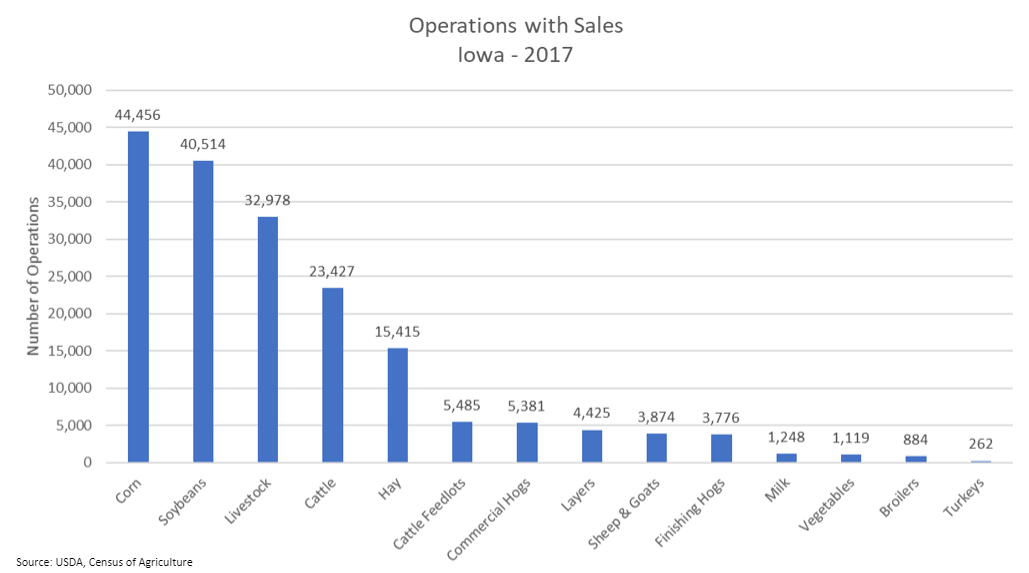
- Large farms (farms with more than $1 million per year in sales) now account for approximately 60% of farm commodity sales.
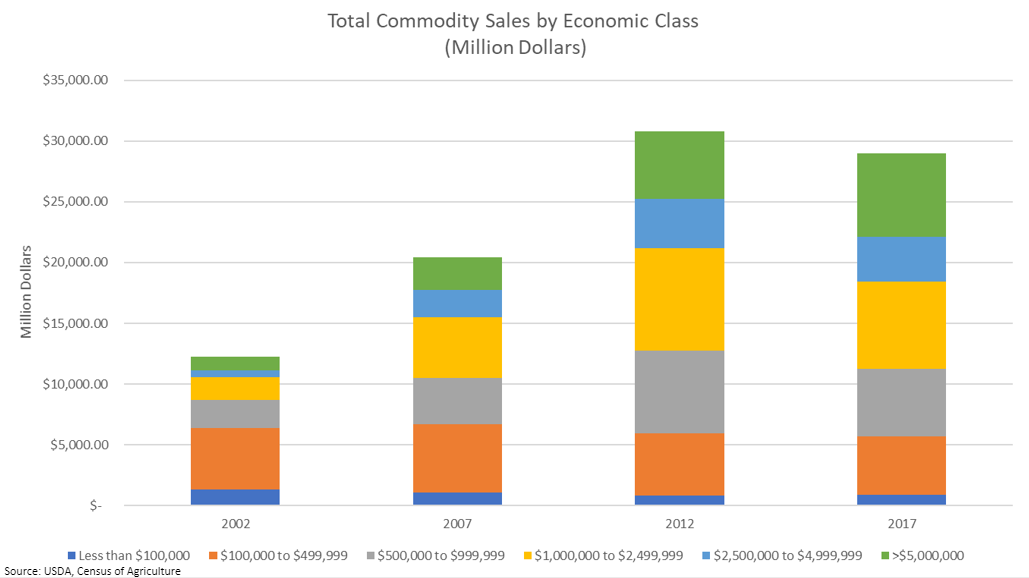
- In 2017, livestock production accounted for approximately 52% of agricultural sales in Iowa. Historically, crops and livestock both have about 50% of Iowa’s ag sales. That balance skewed towards crops in the 2012 Ag census but has reverted back towards balance between the two sectors in 2017.
